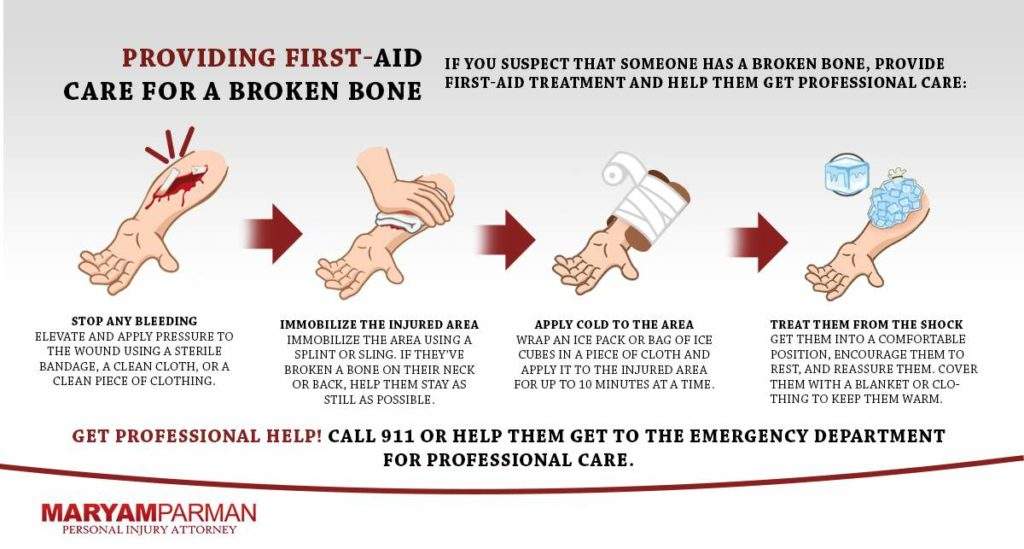The word fracture means to become broken. In the true sense of the word, a fracture and a break of a bone are the same things. There are different kinds of fractures that one can sustain but the first aid treatment for each is about the same. The most common place for a fracture is in the extremities.
The arm or leg is most the susceptible area and a break occurs most often in men under 45 or women over 45 years of age. The reasons are that there are more men in sports and physical labor jobs. In women, when they enter menopause, the body stops producing estrogen, which weakens bone density as bone loss increases.
Types of Fractures
There are many types of fractures that require first aid. First aid for broken bones is limited but necessary. The most important thing is to keep the affected area immobilized until you can either reach help off until help arrives. If you come across an injury with a broken bone, it is important to remember to check the injured person for other injuries, which may not present in an obvious fashion.
- Closed fractures are breaks in the bone with little damage to surrounding tissue.
- Open fractures pierce the skin so that the bone is exposed. The opportunity for infection is introduced.
- Acute or complicated fractures are open fractures with an exposed bone that have caused severe damage to surrounding tissue and possibly organs. These can be life-threatening injuries.
- Greenstick fractures occur in children. Children’s bones are like the limb of a young tree. The bone is flexible and bends before breaking.
- Stress fractures are usually hairline fractures. They occur after repeated stress-over time-to one area of the bone.
First Aid for Dealing with Fractures
The first aid measures taken in the event of bone fractures will depend on the location of the fracture. In the event of an open fracture, the wound is the most important aspect. This is especially true if there is profuse bleeding involved.
- Treat the wound as you would any open wound and dress it accordingly.
- Apply first aid techniques for bleeding and open wound dressing while ensuring immobilization of the limb.
For All Types of Fractures, Follow These Basic Steps:
- Call for emergency services if it is an auto or other severe accident or if the injuries are extensive.
- Speak calmly to the injured person and reassure them.
- Monitor their breathing, pulse, and check for other injuries besides the obvious. A non-presenting head wound could be life-threatening.
- Immobilize the fracture and apply a splint if necessary. Do not move the injured party except to prevent further injury or danger.
- For closed fractures, apply ice if available, remembering not to apply ice directly to the skin. Wrap ice in cloth before applying.
Often, What We Do Not Do Is Just as Important in First Aid as What We Actually Do.
- Never try to move the injured party without supporting the broken limb unless absolutely necessary.
- Do not let the person eat or drink.
- Do not try to realign a broken or dislocated bone.
Remaining Calm Is Key
Do not allow the injured person to move about. Protect the joints above and/or below the break as more damage can occur if these are moved or used. The application of ice is for closed fractures only to prevent swelling and help with pain. In the event of multiple fractures, remain calm, treat those that are open or bleeding first, keeping the injured person as still, and calm as possible. If you are panicked or excited, the injured person will be as well.
If you or another person suffered a fracture due to the fault of another person, contact us!

